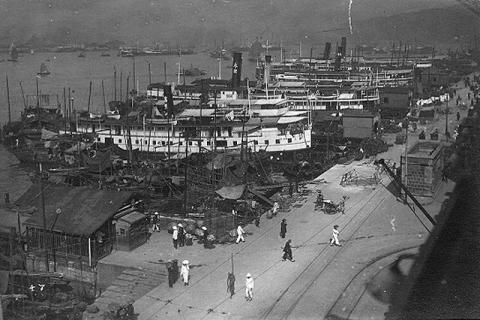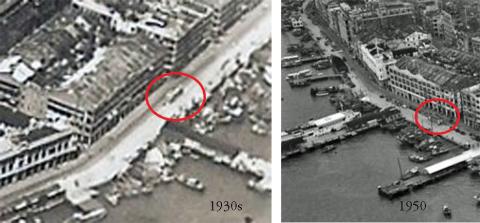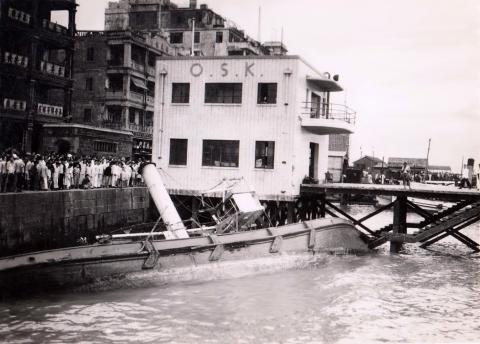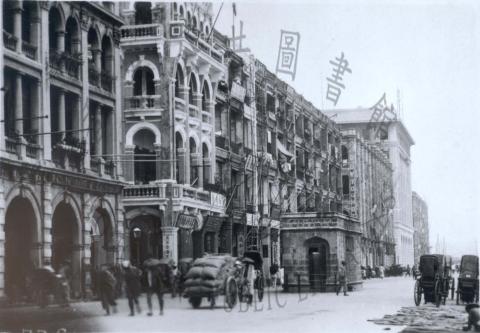This surely isn’t a suitable topic for the Sunday family lunch, nevertheless it is an important contribution to public health.
In old China and therefore in Hong Kong, too, human excrements were collected in holes in the ground and covered with lime, or, in crowded areas, collected in wooden buckets (so called “horse bucket” (馬桶)). That was mainstream, but proper drains were more or less non-existent. Many of the Colonial Surgeons urgently asked for a proper drainage and sewerage system, but there was always an excuse not to act: cost, no available area, competition with private-owned companies. So (inevitably) the catastrophe happened – the outbreak of the bubonic plague in 1894, killing more than 2,500 people. As a consequence, the first bath house opened in 1904 at Pound Lane.
As early as 1866, the government restricted people from defecating on roads, but still not enough latrines and toilets existed for the public. [source: Hidden Hong Kong: A history of Hong Kong’s public bathrooms | Localiiz]
After the 1890s Central Reclamation which was completed 1901-1903, it was decided to build latrines along the new praya. They were mainly built for the coolies which were working in the loading area along the waterfront and nearby godowns.
Let’s start in the west and then move eastwards. The urinals listed below follow the praya (or Connaught Road) and not the time when they were built.
The first public toilet and urinal doesn’t really belong to this series as it is not at the waterfront and there was no reclamation done in the 1890s. The reason why this one is in here is the fact that the praya (DesVoeux Road) is no suitable place because of the tram running along there. It is
Belcher's Street Public Toilet (1st and 2nd generation) [1901- ] | Gwulo
This toilet was built mainly for the workers at the piers and godowns, and it's still there.
Now there is a wide gap to the next one. This is probably due to the fact that the number of piers is limited in this area. One large pier is Jardine's Wharf [1885-1981], possibly the nearby WestPoint Godowns had their own facilities. We pass Sai Ying Pun to reach Sheung Wan. Here we find the
Urinal on Connaught Road at the west end of Wing Lok Street [1902-????]
We move on about 350 m to the east to find
Urinal on Connaught Road, east of Morrison St Junction [1904-1924]
This one had a shorter lifetime compared to the other urinals as it was demolished in 1924. It stood right in front of the New Queen’s Hotel and was removed, the cost was borne by the owners of the hotel. It was replaced by
Urinal on Connaught Road, opposite Western Market [1924-????]
About 200 m further to the east we have
Urinal on Connaught Road east of Man Wa Lane Junction [1903-????] |
Almost another 300 m to the east stood
Urinal on Connaught Road, east of Gilman St Junction [1905-????]
And finally another 350 m east to have the last one on the praya
Urinal on Connaught Road, opposite the end of Douglas Street [1906-c.1952]
All five urinals are visible on the 1924 map.
The lifetime of these public conveniences was about half a century (except the two near Western Market which only had a quarter each). When they were built, the praya was new and used mainly for loading and unloading of goods, for people accessing ferries and for similar purposes. They stood right in the middle of the praya, or Connaught Road later. In times of rickshaws and hand-pulled carts, this certainly was not a problem. With increasing motor traffic, they became more and more a traffic obstacle. In the 1930s and 1940s, when cars still used to park in the centre of the road, this wasn’t a severe problem.
Things changes after WW2, when the number of cars increased dramatically, the urinals simply stood in the way. In the early 1950s, all were removed. This was an improvement for traffic, and certainly also for air quality because they used to stink like hell!






